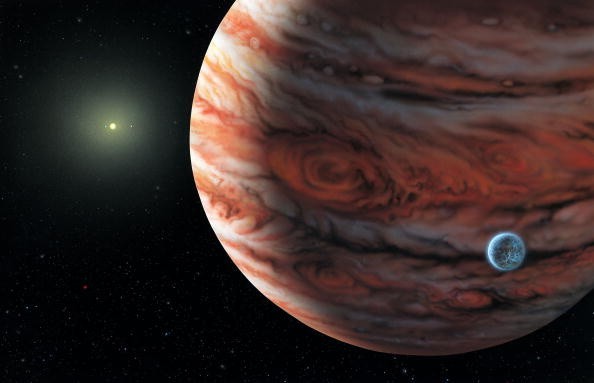NASA's Hubble Space Telescope was able to capture various photo versions of Jupiter's atmosphere using different colors of light. Some people find one of these captured images scary since they claim it looks like hell.

The new images of Jupiter came from the Gemini North and the NASA/ESA Hubble Space Telescope. They were able to capture the giant gas planet's atmosphere in infrared, ultraviolet wavelengths, and visible light.
On the other hand, NASA's images show atmospheric features of Jupiter, including superstorms and giant cyclones, which stretch across the gaseous planet's disc, as well as the popular Great Red Spot.
To give you more idea, here's how NASA captured these new astonishing photos of Jupiter's atmosphere.
Hubble's Near InfraRed Imager
According to SlashGear's latest report, NASA was able to capture these new images using the Wide Field Camera 3 installed on the Hubble Space Telescope. Aside from this, the international space agency also relied on the giant space telescope's Near InfraRed Imager instrument to capture the scary image of Jupiter's atmosphere.

Also Read: NASA to Conduct Final Test of James Webb's Golden Mirror: The Space Telescope Will Capture Oldest Stars' Light
This space equipment is currently located at Gemini North in Hawaii. The trio of observations was taken at the same time, January 11, 2017, at 15:41 universal time.
Meanwhile, the YouTube channel NOIRLabAstro featured three new images, specifically the infrared, visible, and ultraviolet versions.
The infrared photo shows Jupiter with colors of red and black. In this image, the gaseous giant looks like a planet that has lots of lava across its surface, making it look like hell.
On the other hand, the ultraviolet version shows a cool version of Jupiter since it has violet, light blue, and other cool colors that give it a cold ambiance.
If you want to see the exact images, you can check the video below.
Why This New Discovery is Important?
Yahoo UK reported that the new images captured by NASA highlight the key advantage of multiwavelength astronomy. These specifically include showing and viewing planets and other heavenly bodies at different wavelengths of light.
Thanks to this innovation, space experts are to see unavailable insights of a planet.
If you want to know more details about it, all you need to do is click this link. For more news updates about NASA and its upcoming space discoveries, always keep your tabs open here at TechTimes.
Read also: Orbite: A New Space Company That Offers Training Programs For People Who Wants to Travel to Space
This article is owned by TechTimes
Written by: Griffin Davis




